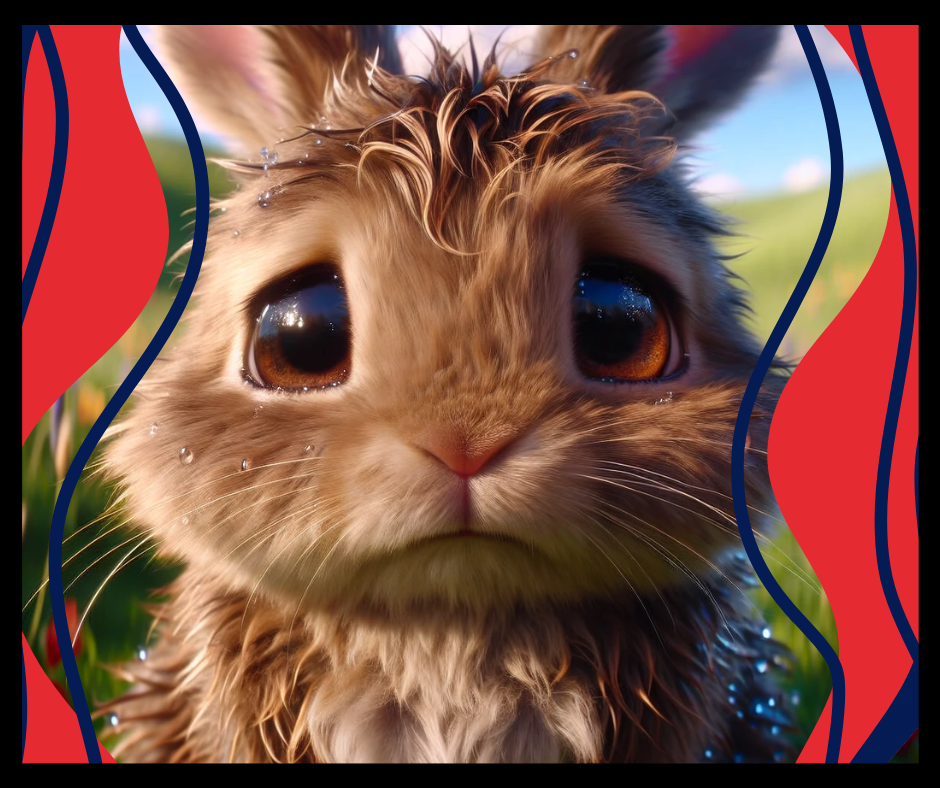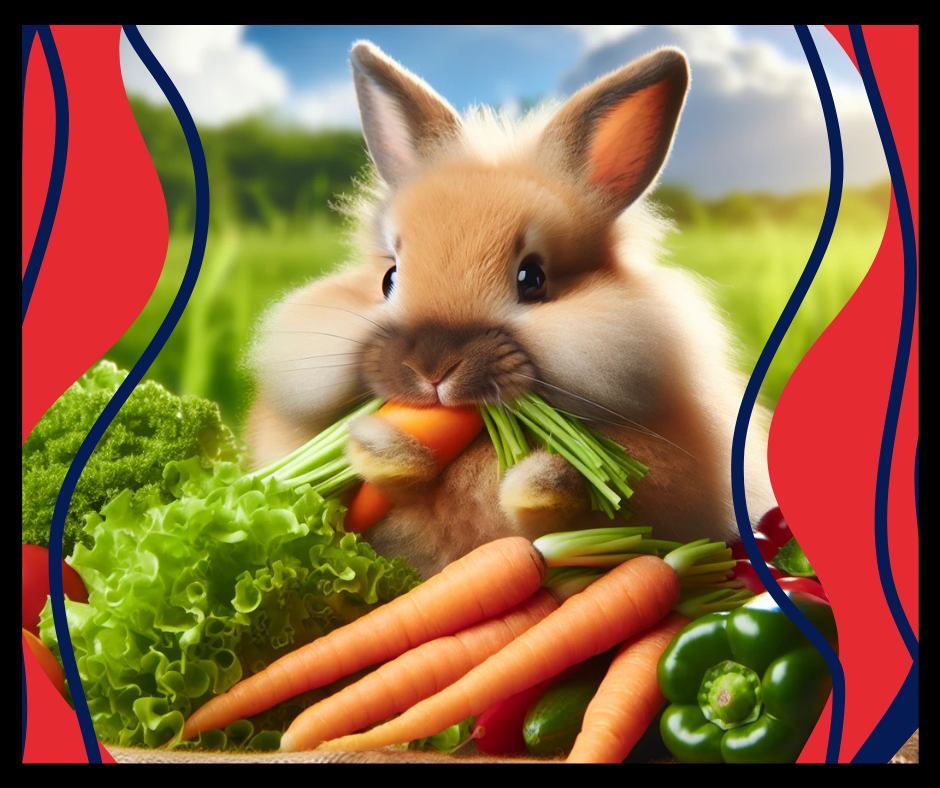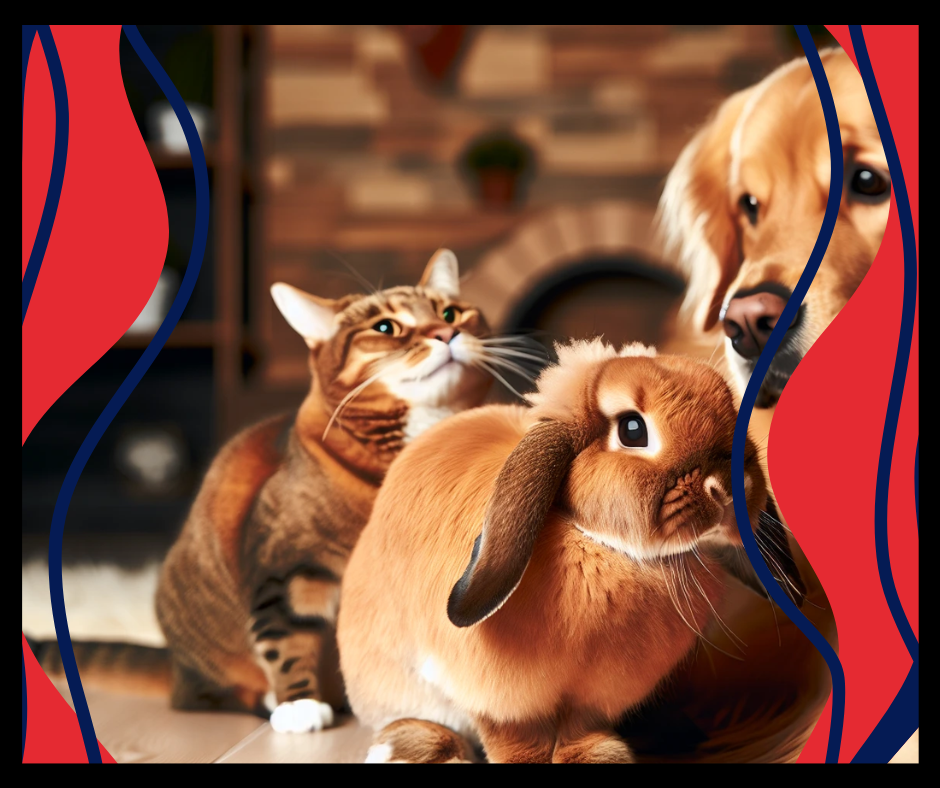Did you know that rabbits can suffer from a condition called snuffles, which is similar to the common cold in humans? It’s true, and it’s crucial to understand and manage this condition to ensure the well-being of your beloved pet.
In this guide, we will explore the signs, causes, treatment, and prevention of snuffles in rabbits, as well as caring for other pets and human health considerations. You can keep your rabbit healthy and happy with the right knowledge and care.

Key Takeaways
-
Early recognition of symptoms is essential for prompt treatment of snuffles in rabbits.
-
Bacterial infections, dental diseases, and blocked tear ducts are common causes. Proper ventilation and hygiene can help prevent them.
-
Veterinary care plays a vital role in treating snuffles, from diagnosis to supportive care monitoring progress.
Recognizing Snuffles in Rabbits

Prompt treatment of snuffles in rabbits depends on early recognition of the signs. As prey animals, rabbits typically attempt to conceal any signs of illness, making it difficult to detect when they are unwell or ill. Early signs of it include:
-
Sneezing
-
Nasal discharge
-
Watery eyes
-
Matted fur
-
Changes in appetite and energy levels
This section offers a detailed analysis of these symptoms to aid in identifying snuffles in your rabbit and seeking appropriate veterinary care.
Sneezing and Nasal Discharge
Sneezing and nasal discharge, also known as a runny nose, can indicate the presence of snuffles, a dangerous respiratory infection, in rabbits. Snuffles are an illness commonly observed in domesticated rabbits, affecting up to 10 percent of rabbits. Maintaining a clean and warm environment is key to reducing the risk of snuffles and other health issues when raising rabbits.
Rabbits with snuffles may also show signs of rabbits breathing issues, such as:
-
Rapid breathing
-
Difficulty breathing
-
Congestion
-
Labored breathing
All of these symptoms can impact their overall respiratory function. Observing these symptoms in your rabbit necessitates consultation with a knowledgeable veterinarian for accurate diagnosis and treatment.
Watery Eyes and Matted Fur
Watery eyes and matted fur on a rabbit’s face and paws may be indicative of snuffles, as they may be attempting to clean away discharge from their eyes and nose. The watery eyes in rabbits with snuffles are attributed to the infection and inflammation of the respiratory system, resulting in an overproduction of tears. The increased nasal discharge from snuffles can make a rabbit’s fur wet and sticky, leading to matting.
Use a warm washcloth to soften the fur, and gently remove mats in rabbits with snuffles. Be gentle to ensure the rabbit does not experience any discomfort. Severe cases of snuffles could cause runny eyes, potentially leading to eye infections or vision loss.
Changes in Appetite and Energy Levels
Alterations in a rabbit’s appetite and energy levels could serve as early signs of snuffles or other health complications. A loss of appetite in rabbits can be indicative of a serious health issue, as they have delicate digestive systems that require consistent nourishment. In the wild, rabbits would graze on grass for several hours a day, and hay should comprise around 85% of a rabbit’s diet.
Rabbits with snuffles could experience significant changes in energy levels and appetite. Rabbits may display decreased energy, a tendency to hide, and reduced vocalizations. Furthermore, snuffles can cause reduced food intake and weight loss due to difficulty swallowing caused by a blocked nose. If you notice changes in your rabbit’s appetite or energy levels, consult a veterinarian promptly to address the issue before it becomes more severe.
Causes of Snuffles in Rabbits

Grasping the causes of snuffles in rabbits is key to its prevention and management. This section covers the main causes of snuffles, including:
-
Bacterial infections
-
Dental diseases
-
Blocked tear ducts
-
Environmental factors
Identifying and addressing these causes can contribute to maintaining your rabbit’s health and minimizing the risk of snuffles.
Bacterial Infections
Bacterial infections, such as Pasteurella Multocida and Bordetella Bronchiseptica, are common causes of snuffles in rabbits. A bacterial infection with Pasteurella Multocida is a common issue that typically colonizes the upper respiratory tract of rabbits and is a major contributor to snuffles, a respiratory disease in rabbits.
Bordetella Bronchiseptica is a contagious bacterium known to be associated with upper respiratory tract infections in rabbits, which can lead to snuffles.
Rabbits can contract bacterial infections like Pasteurella Multocida and Bordetella Bronchiseptica through direct contact with other infected animals or environments contaminated with these bacteria.
These bacteria are known to colonize the upper respiratory tract of rabbits and can lead to respiratory diseases. Maintaining a clean environment for your rabbit is vital to minimize the risk of bacterial infections and snuffles.
Dental Diseases and Blocked Tear Ducts
Dental diseases and blocked tear ducts can contribute to the development of snuffles by promoting bacterial growth and nasal irritation. Overgrown and/or maloccluded teeth can cause the tooth roots to push upwards and obstruct the tear duct, thus preventing normal tear drainage and allowing bacteria to accumulate. Signs of dental disease in rabbits may include overgrown and/or maloccluded teeth.
Blocked tear ducts in rabbits can be a factor in the emergence of snuffles. The tooth roots of rabbits with dental disease are situated close to the tear ducts, and if the tear ducts become blocked, it can result in excessive tearing and scalding of the skin around the eyes.
This can create an environment conducive to snuffling, especially when the rabbit’s mouth is also affected by dental issues.
Regular dental check-ups and appropriate care can help ward off dental diseases and snuffles in rabbits.
Environmental Factors
Environmental factors, such as poor ventilation and unsuitable bedding materials, can increase the risk of snuffles in rabbits. Living in cramped or poorly ventilated housing can contribute to the onset of snuffles in rabbits. Adequate ventilation is essential for the well-being of rabbits as it helps regulate temperature, humidity, and air quality in their environment.
Bedding options for rabbits that can help reduce the risk of snuffles include straw, wood products like sawdust or hardwood chips, and paper materials such as recycled paper or plant pellets. Avoid using bedding made from pine or cedar wood.
Providing a clean and well-ventilated environment for your pet rabbits can help prevent the development of snuffles and other health issues.
Treating Snuffles: The Role of Veterinary Care
This section covers the role of veterinary care in snuffles treatment and the steps involved in managing this condition.
Diagnosis and Antibiotic Treatment
A veterinarian will diagnose snuffles in rabbits and prescribe suitable antibiotics to treat the infection. To determine the most suitable course of treatment, a sample of the discharge is taken, and a culture and sensitivity test is conducted.
The typical course of antibiotic treatment for snuffles in rabbits involves:
-
Oral antibiotics administered for two to four weeks
-
Enrofloxacin
-
Trimethoprim sulfa
-
Chloramphenicol
-
Penicillin G
-
Azithromycin
Adhering to the prescribed treatment course for the recommended duration is crucial. Any antibiotic therapy may carry a risk of life-threatening diarrhea and enterotoxaemia in rabbits.
Consult your veterinarian to prescribe antibiotics and provide probiotics to the rabbit in order to replenish the beneficial bacteria in its gastrointestinal system if the rabbit experiences gastrointestinal issues due to the antibiotic.
Nebulizing and Supportive Care
Nebulization and supportive care, like keeping the rabbit warm and clean, can aid in managing snuffles symptoms and promoting recovery. To treat rabbit snuffles, nebulizing treatment involves utilizing a nebulizer machine to administer medication as a vaporized mist. The rabbit is fitted with a mask over its nose, and the treatment can be repeated at 4 -12 hours intervals.
Supportive care, which provides supplementary care and support to the rabbit’s immune system and general well-being, plays a key role in the recovery from snuffles in rabbits. This includes practices such as:
-
Maintaining a clean environment
-
Isolating the affected rabbit from other rabbits to reduce the risk of infection
-
Administering the prescribed medications as prescribed.
Moreover, supportive care may involve providing a balanced diet, guaranteeing adequate hydration, and closely monitoring the rabbit’s respiratory symptoms.
Monitoring Progress and Follow-up Appointments
Monitoring the rabbit’s progress and attending follow-up appointments with the veterinarian are key to the successful treatment of snuffles. Imaging techniques such as X-rays, endoscopy, or computed tomography (CT) scans can be utilized to assess the structure of the nasal passages. Additionally, it is important to closely observe the rabbit for signs of illness, such as a decrease in appetite, appearance of lethargy or depression, or any changes in behavior.
At follow-up appointments for a rabbit with snuffles, it is essential to assess the progress of the rabbit’s symptoms, any alterations in behavior or appetite, and the efficacy of the treatment plan. Regular follow-up appointments guarantee that:
-
The medication management is effective
-
Any necessary feeding alterations or additional treatments are implemented
-
Adherence to the veterinarian’s guidelines for treatment is maintained
Follow-up appointments with a rabbit-savvy vet play a vital role in guaranteeing the rabbit’s health and recovery.
Preventing Snuffles in Rabbits

Maintaining a healthy diet, providing suitable living conditions, and ensuring regular check-ups and dental care are part of preventing snuffles in rabbits.
This section covers best practices for preventing snuffles in your rabbit and maintaining their overall health.
Diet and Nutrition
A diet rich in fiber and fresh vegetables can support overall rabbit health and reduce the risk of dental issues, thereby helping prevent snuffles. Grass and hay should constitute the primary components of a rabbit’s diet to prevent snuffles. Orchard grass and other types of hay are high in fiber and low in protein and calcium content, which is beneficial for rabbits’ digestive tracts.
Fiber and fresh vegetables, which provide essential nutrients and support a healthy digestive system, are vital in a rabbit’s diet for the prevention of snuffles. Some of the most beneficial fresh vegetables for a rabbit’s health include:
-
Leafy green lettuce (such as Romaine, butterhead, Bibb)
-
Red or green leaf lettuce
-
Arugula
-
Endive
-
Turnip greens
-
Dandelion greens
-
Chicory
-
Raspberry
Other acceptable options include broccoli, green peppers, Brussels sprouts, wheatgrass, radicchio, squash, chard, cauliflower, and broccoli.
Living Conditions
Offering well-ventilated living conditions and avoiding harmful bedding materials like cedar shavings can contribute to preventing snuffles in rabbits. To ensure optimal living conditions and prevent snuffles in rabbits, it is important to:
-
Provide a spacious, clean, and well-ventilated environment with plenty of fresh air circulation.
-
Avoid poorly ventilated hutches.
-
Routinely clean out the living quarters to prevent the accumulation of fumes from urine.
Bedding options for rabbits that can help reduce the risk of snuffles include straw, wood products like sawdust or hardwood chips, and paper materials such as recycled paper or plant pellets.
Avoid using bedding made from pine or cedar wood. Providing a clean and well-ventilated environment for your rabbit can help prevent the development of snuffles and other health issues.
Regular Check-ups and Dental Care
Regular check-ups and dental care can aid in identifying and addressing potential issues that may contribute to the onset of snuffles. Taking your pet rabbit to the veterinarian for a check-up annually or every six months is suggested for elderly rabbits or those with existing health issues.
A typical rabbit dental check-up involves:
-
A physical examination of the rabbit’s teeth to assess for any indications of dental issues or abnormalities
-
Checking for overgrown teeth or malocclusion
-
Evaluating the rabbit’s diet and providing recommendations for proper dental health
-
Discussing any concerns or questions you may have about your rabbit’s dental care
By scheduling regular dental check-ups for your rabbit, you can help prevent and address dental issues before they become more serious.
Regular dental examinations can help maintain optimal dental health in rabbits, preventing dental diseases and snuffles. By ensuring your rabbit receives regular check-ups and dental care, you can help maintain their overall health and prevent the development of snuffles.
Caring for Other Pets and Human Health Considerations

Managing snuffles in rabbits, caring for other pets, and consideration of human health concerns involve understanding rabbit-to-rabbit transmission, interactions with other animals, and potential health risks to humans.
This section covers how to care for other pets and address human health concerns when dealing with snuffles in rabbits.
Transmission Between Rabbits
Given the highly contagious nature of snuffles among rabbits, monitoring other rabbits for signs of infection and taking preventive measures is necessary. It can be spread through direct contact between infected and healthy rabbits and respiratory droplets. If one of your rabbits has snuffles, it is recommended to separate them temporarily and monitor the health of the other rabbit closely.
When dealing with an infected rabbit, consulting a veterinary professional who specializes in rabbits is necessary. This will help guide you on how to treat any other rabbits that may have come into contact with the affected animal.
By monitoring your rabbits’ health and taking necessary precautions, you can help prevent the spread of snuffles and protect your rabbits’ well-being.
Interactions with Other Animals
Given the potential for rabbits to transmit snuffles to dogs through the Bordetella Bronchiseptica bacteria, monitoring interactions between rabbits and other animals is crucial. The indications of Bordetella Bronchiseptica infection in dogs include:
-
A dry, ‘honking’ or gagging cough
-
Nasal discharge
-
Lethargy
-
Fever
To minimize the risk of transmission, keep rabbits and dogs separated if one of them is infected with snuffles. By carefully monitoring the interactions between your rabbits and other animals, you can help prevent the spread of snuffles and protect your pets’ health.
Human Health Concerns
Even though the risk of humans contracting illness from rabbit snuffles is low, it is important to adopt proper cleaning and disinfecting practices, especially for individuals with weakened immune systems. Humans should wear protective clothing, such as gloves and a mask, when handling rabbits with snuffles to minimize the risk of infection.
Individuals with weakened immune systems are at an increased risk of infection when handling a sick rabbit with snuffles, as the rabbit’s immune system may also be compromised. In severe cases, snuffles can even lead to pneumonia, which can be potentially life-threatening for these individuals.
To protect your own health and the well-being of your rabbit, it is important to:
-
Maintain proper cleaning practices
-
Wear gloves and a mask when handling rabbits with snuffles
-
Wash your hands thoroughly after handling the rabbit
-
Avoid close contact with the rabbit’s nasal discharge
-
Keep the rabbit’s living area clean and well-ventilated
By following these precautions, you can reduce the risk of infection and ensure the safety of both you and your ill rabbit.
Video Credit: @PetsLifeToday
Summary

Snuffles in rabbits is a serious respiratory infection that requires prompt attention and proper care. By recognizing early signs, understanding the causes, and seeking veterinary care for diagnosis and treatment, you can help your rabbit recover from snuffles and maintain their overall health.
Prevention is key in managing it. Providing a healthy diet, suitable living conditions, regular check-ups, and dental care can help reduce the risk of snuffles and support your rabbit’s well-being.
Additionally, monitoring interactions between rabbits and other animals and considering human health concerns can help protect the health of all household members.
With the knowledge and guidance provided in this complete guide, you can confidently care for your rabbit and minimize the risk of snuffles, ensuring your beloved pet’s healthy life.
Frequently Asked Questions
What causes snuffles?
Snuffles are bacterial infections caused by Pasteurella Multocida, Bordatella, and Pseudomonas. It can also be accompanied by ear or balance problems and dental issues.
What can I give my rabbit for snuffles?
Consult your vet to prescribe antibiotics for your rabbit’s snuffles. They may recommend a nebulizer too, to ensure the medication reaches their lungs.
Can snuffles in rabbits go away on their own?
Snuffles in rabbits can be mild and self-resolve. However, it is important to contact a vet for treatment as the symptoms could develop into pneumonia or further difficulty breathing and could prove fatal.
What are the early signs of snuffles in rabbits?
Early signs include sneezing, nasal discharge, watery eyes, matted fur, and changes in appetite and energy levels, so it’s important to be aware of these symptoms.
How can I prevent snuffles in my rabbit?
To prevent this, ensure they have a healthy diet, suitable living conditions, and regular check-ups and dental care.
Learn Rabbit Care, Tips, and Tricks!
Learn more about caring for your bunny with us. We’ve got everything from rabbit hutches to essential care tips.
For more information on rabbit care, visit our website: therabbithop.com.
Join our community and become a bunny care expert!



